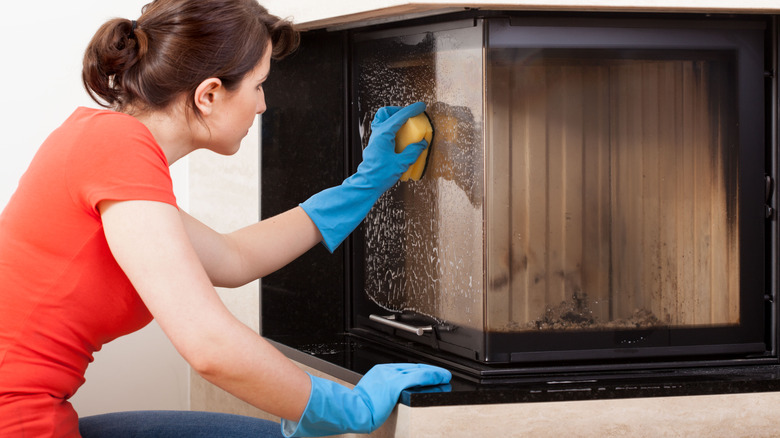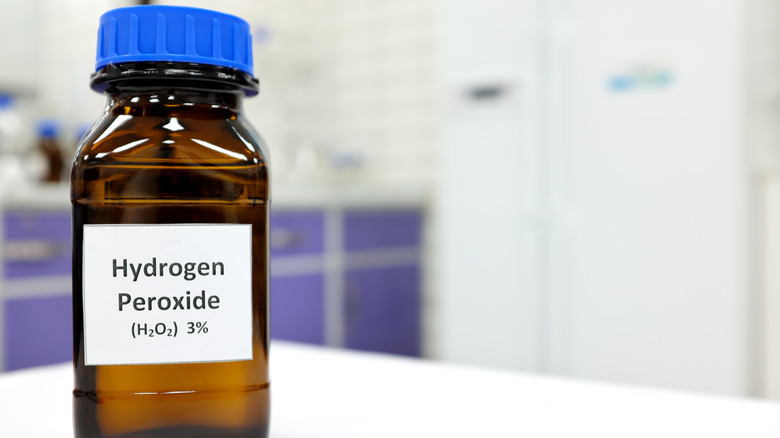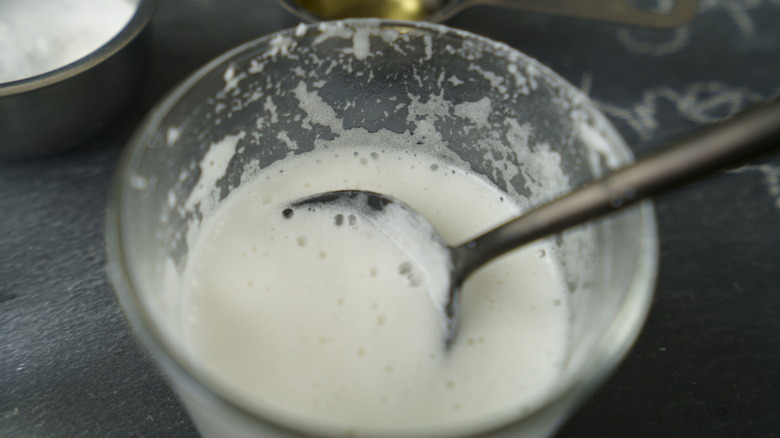Is Using Hydrogen Peroxide To Clean Your Fireplace Surround A Good Idea?
Hydrogen peroxide is commonly used as a cleaning agent due to its versatile properties. It is effective at removing stains and disinfecting against bacteria, viruses, and fungi, and can be used to brighten and shine various surfaces. Another plus is that it has some similar qualities to chlorine bleach but is less harsh. Still, hydrogen peroxide needs to be used carefully and can't be applied to all types of surfaces in the home. In terms of fireplace surrounds, it can be added to the cleaning routine, but only depending on the material.
How a fireplace should be cleaned depends on the material it's made from. For instance, ceramic tiles will need cleaning with a scrubbing brush, wood will need a good beeswax polish, metal surfaces will need a steel brush and grate polish, and brick will be good with just water and soap. This means a chemical substance like hydrogen peroxide won't always be the best idea.
It depends
Hydrogen peroxide can be a good cleaning substance to remove stains if used on the right type of material. It is safe for stone, limestone, brick, tiles, and wood surrounds, but there's little information out there about using it with metal. It can't be used in the same way, however, and needs to be applied differently to each surface. For brick, limestone, and stone, it should be used to address tough stains as you clean, not as the main cleaner. For tiles, it should be used to clean stains on the grout.
It can't be used on all types of the same material either. For stone, it should be used on light stones only as it can discolor dark ones. These limitations show that hydrogen peroxide shouldn't be depended on as a fireplace surround cleaner. It may come through as a cleaner for your floors, clothes, and children's toys, but it can't do more than tackle stains on certain fireplace materials, and should always be tested in an inconspicuous place first.
How to use it
To use hydrogen peroxide on a brick fireplace surround, pour about 1 tablespoon on any stains, leave it for a few minutes, apply the main cleaner to the spot, and then scrub. For limestone, mix hydrogen peroxide and flour to create a homemade poultice, apply the substance to the stains, and allow it to dry completely. Being careful not to affect the limestone, remove or gently scrape off the dried paste and the stain should come off with it.
It can be used the same way to remove stains from normal stone. However, the poultice should contain 1 part hydrogen peroxide and 5 parts water. For tile grout, mix hydrogen peroxide and water equally and use a cleaning toothbrush to apply the mix. Leave it for some minutes, lightly scrub the stains off, and wipe down with a clean, damp cloth. It should leave the grout looking brighter as well. When cleaning with hydrogen peroxide, avoid serious mistakes like mixing it with other chemicals or using an expired product.


